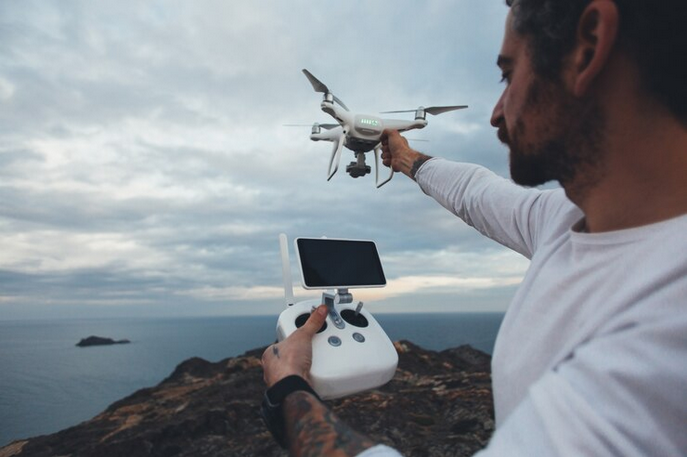Introduction
Aerial drone photography has become increasingly popular in recent years, offering photographers a unique perspective and unparalleled creative opportunities. From capturing breathtaking landscapes to revealing hidden architectural gems, drones provide photographers with the ability to unleash their creativity and capture stunning images from above. In this guide, we'll explore tips and techniques for achieving breathtaking aerial drone photography, from mastering flight skills to composition principles and post-processing tricks.
Mastering Flight Skills
Before diving into aerial photography, it's essential to master the basics of drone flight. Spend time familiarizing yourself with the controls of your drone, practicing maneuvers such as hovering, ascending, descending, and navigating in different directions. Pay attention to factors such as wind speed, weather conditions, and obstacles in your environment, and always prioritize safety during flight. Practice flying in open spaces with minimal obstructions before attempting more complex maneuvers or aerial photography sessions.
Understanding Composition Principles
Composition is key to creating compelling aerial photographs. Apply traditional composition principles such as the rule of thirds, leading lines, and symmetry to your aerial shots to create visually appealing images. Experiment with different perspectives and angles to capture unique viewpoints and highlight interesting features within the frame. Consider the scale and perspective of your subjects in relation to their surroundings, and use foreground elements to add depth and context to your compositions.
Harnessing Natural Light
Lighting plays a crucial role in aerial photography, as it can dramatically affect the mood and atmosphere of your images. Pay attention to the direction, intensity, and quality of natural light when planning your aerial photography sessions. Golden hour, the period shortly after sunrise or before sunset, offers soft, warm light that can enhance the colors and textures of landscapes. Alternatively, experiment with shooting during blue hour, the time before sunrise or after sunset when the sky takes on a deep blue hue, for a more dramatic and atmospheric effect.
Exploring Different Perspectives
One of the most exciting aspects of aerial photography is the ability to explore familiar landscapes from a new perspective. Experiment with flying at different altitudes and angles to discover unique viewpoints and compositions. Fly low to the ground to capture intricate details and textures, or ascend to higher altitudes for sweeping panoramic views. Use your drone's maneuverability to your advantage, exploring different vantage points and perspectives to create dynamic and engaging photographs.
Capturing Motion and Dynamic Elements
Incorporating motion and dynamic elements into your aerial photographs can add a sense of energy and excitement to your images. Experiment with capturing movement, such as waves crashing on the shore, cars moving along a winding road, or clouds drifting across the sky. Use a slower shutter speed to create motion blur and convey a sense of speed or fluidity in your images. Additionally, consider incorporating dynamic elements such as people, wildlife, or vehicles to add a sense of scale and narrative to your aerial photographs.
Post-Processing Techniques
Post-processing is an essential step in the aerial photography workflow, allowing photographers to enhance and fine-tune their images to achieve their desired look. Experiment with software such as Adobe Lightroom or Photoshop to adjust exposure, contrast, and color balance, and fine-tune details such as sharpness and clarity. Consider applying creative effects such as HDR (High Dynamic Range) or panoramas to enhance the visual impact of your aerial photographs. Additionally, experiment with advanced techniques such as image stitching and compositing to create stunning, larger-than-life aerial panoramas.
Conclusion
Aerial drone photography offers photographers an unparalleled opportunity to unleash their creativity and capture stunning images from a unique perspective. By mastering flight skills, understanding composition principles, harnessing natural light, exploring different perspectives, capturing motion and dynamic elements, and employing post-processing techniques, photographers can elevate their aerial photography to new heights. Whether you're capturing sweeping landscapes, architectural marvels, or dynamic urban scenes, aerial photography offers endless possibilities for creative expression and storytelling. With dedication, practice, and a willingness to experiment, photographers can unlock the full potential of aerial drone photography and create images that inspire and captivate viewers.





Comments